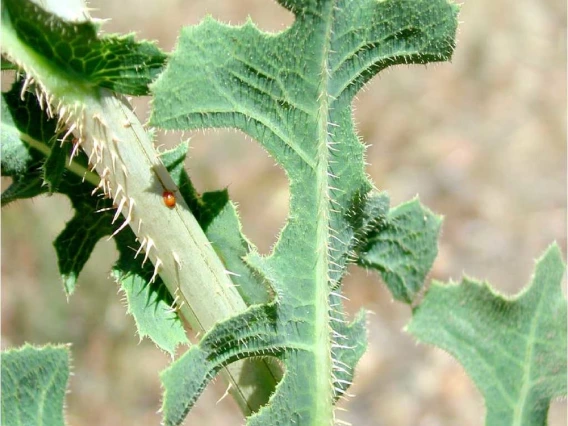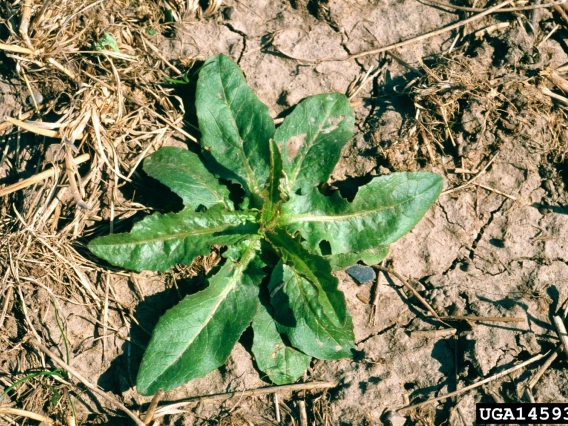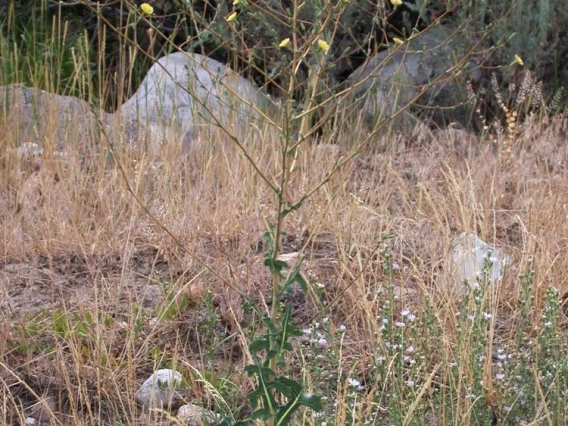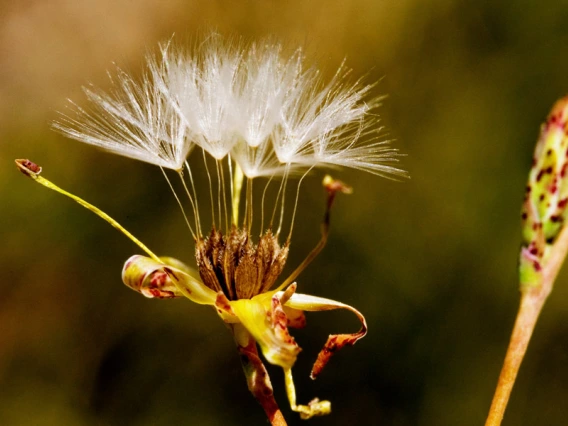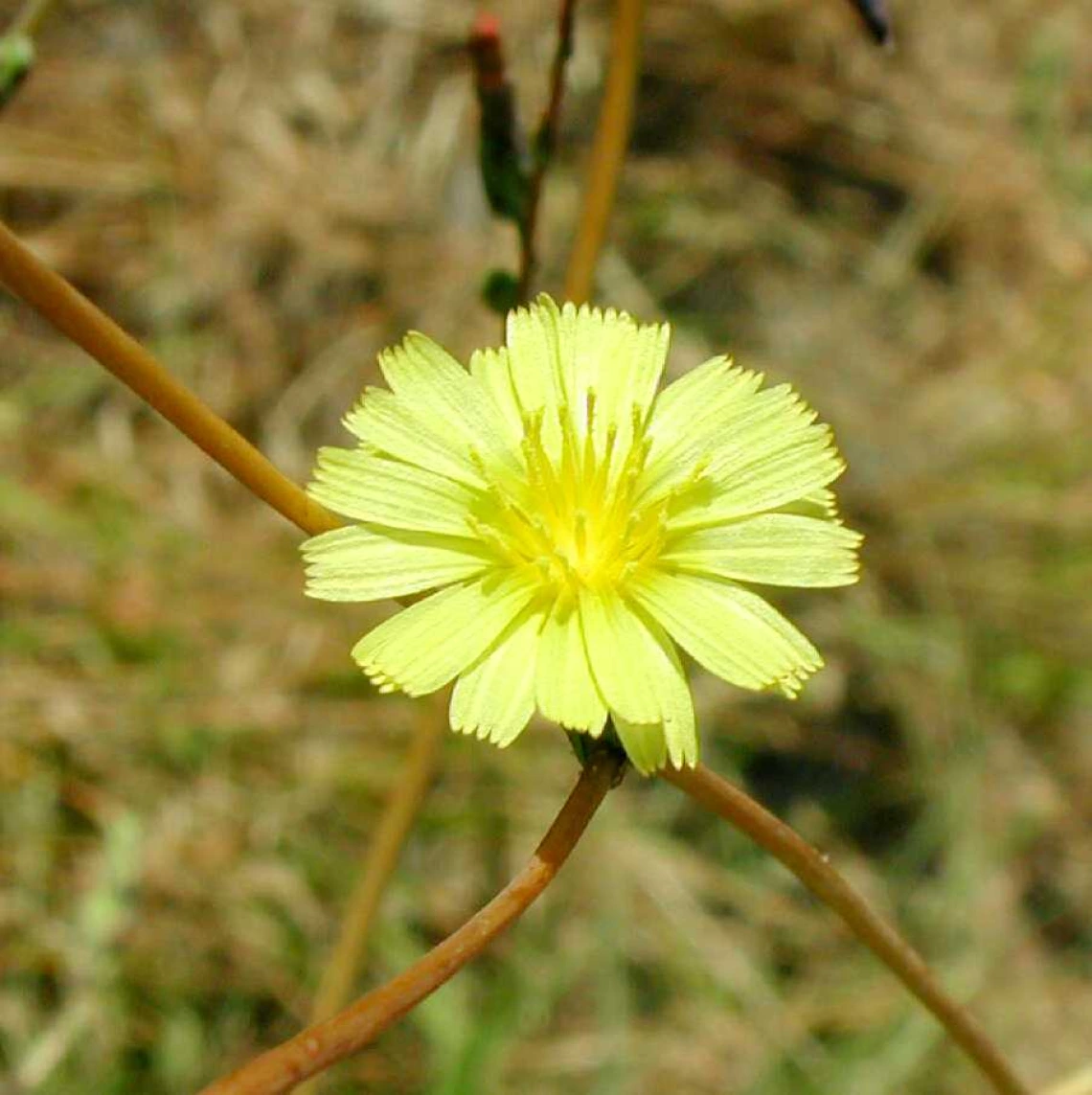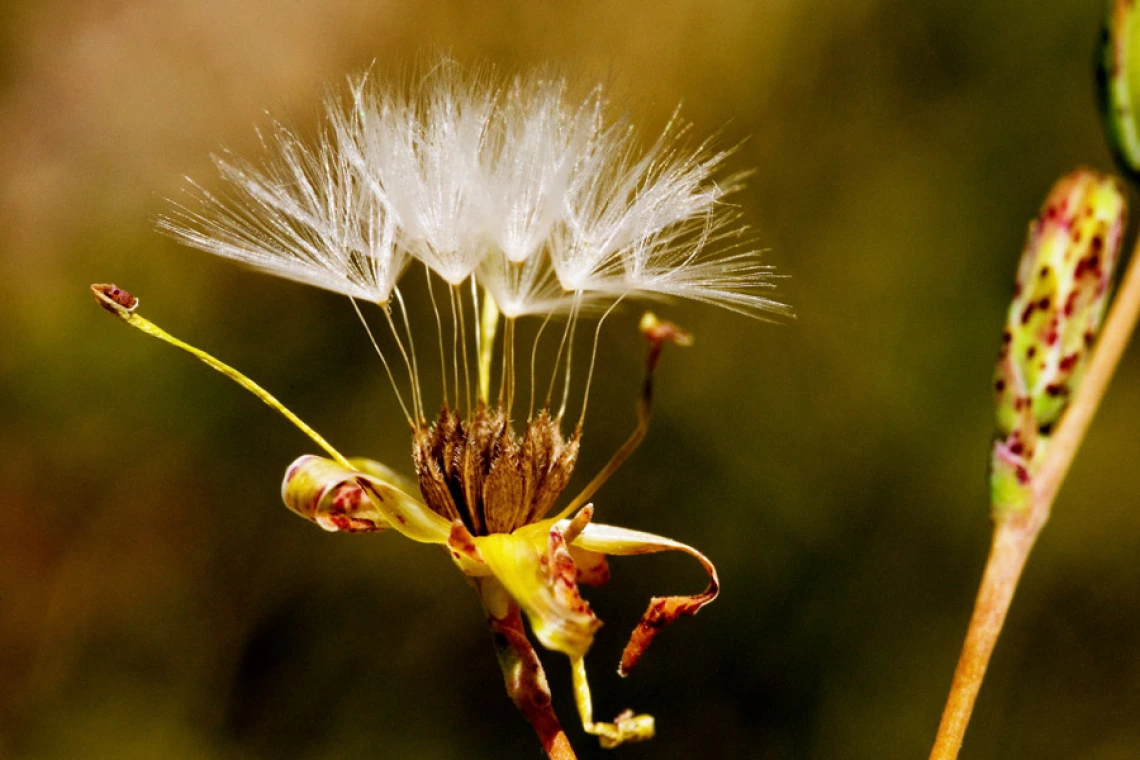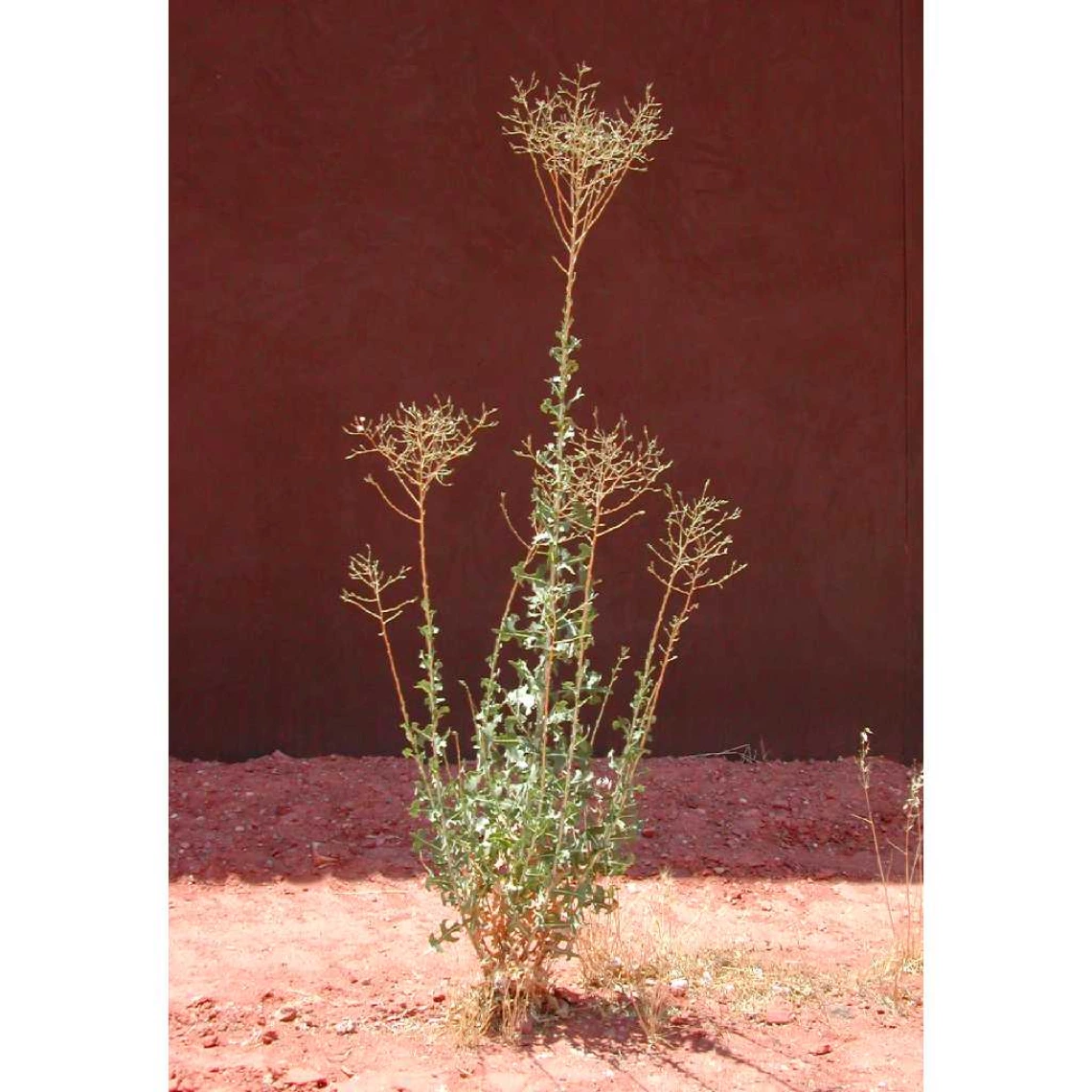Image
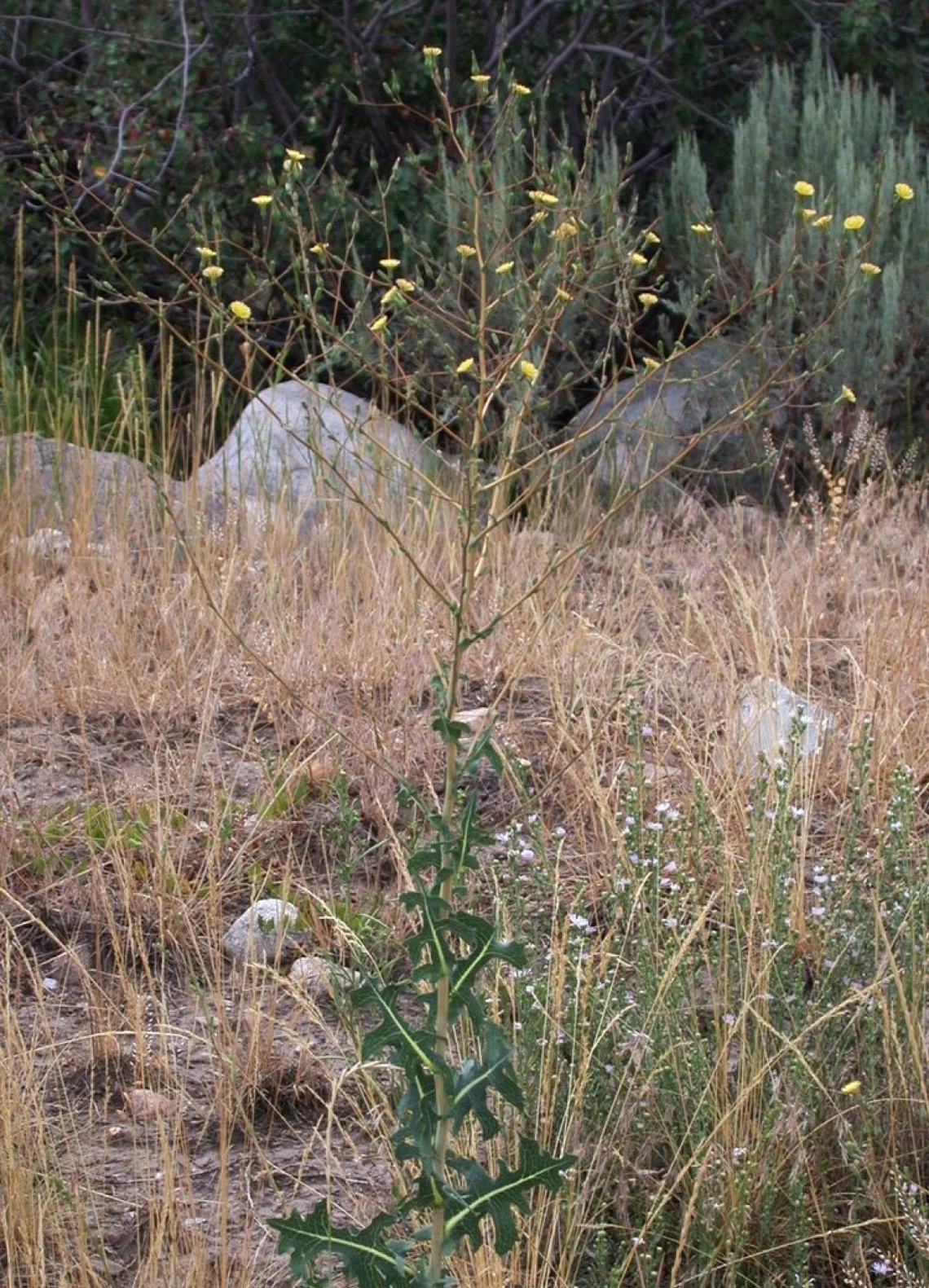
Prickly lettuce habit
Mary Ellen (Mel) Harte, Bugwood.org
Common Name(s)
Prickly lettuce
Scientific Name
Lactuca serriola
Family
Sunflower or Aster family (Asteraceae)
Reasons for concern
This plant is now naturalized over most of North America. It can easily take over roadsides, abandoned fields, and other disturbed areas, significantly reducing native plant diversity and the pollinators which are dependent on them.
Classification
Non-native
Botanical description
Tall, erect herbaceous plant.
Leaves
In rosette stage, leaves are light green, oval shaped, with slightly wavy margins (similar to dandelion leaves). Leaves on stalk have no stem, are twisted at base, and are 2 to 10 inches long and ½ to 3 inches wide. Arranged alternately, generally deeply lobed with prickly edges. Row of spines runs along underside of middle rib.
Stem(s)
Usually one. Following rosette stage, stalk grows 1 to 5 feet tall, lower third of which occasionally is covered in small spines. Prickly. Stems produce milky sap when broken, branching only in upper flowering portion.
Flowers
Numerous yellow flower heads, borne on branching stems at top of stalk. Blooms contain only ray flowers, ½ to 3/4 inch in diameter. Blooms July through September.
Seeds
Flattened, tan seeds, each attached to silky parachute. Viable up to three years.
Roots
Long taproot
Native to
Northern Africa and Eurasia
Where it grows
Roadsides, agricultural land, yards, gardens, disturbed sites. Elevations 2,500 to 8,000 feet.
Lifecycle
Winter annual, occasionally biennial
Reproduction
By seed
Weedy Characteristics
Seed production can be from several hundred to tens of thousands per plant and mature seeds germinate immediately. Parachute on seeds enables it to travel into uninfested areas by wind. It is drought tolerant.
Control Strategies
Remove plants manually, being sure to remove roots; till or hoe before plants flower. Disturb soil as little as possible. Step down disturbed soil. Plant desirable species to outcompete invasives. Frequently monitor previous infestations for new growth.
References
- Prickly lettuce University of California Agriculture and Natural Resources IPM – Weed Gallery
- Lactuca serriola, Prickly Lettuce Southwest Colorado Wildflowers


